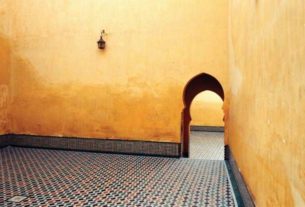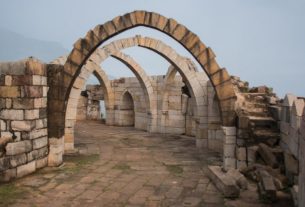In ‘The Castle of the Carpathians’, originally titled Le Château des Carpathes written in 1893, Jules Verne deviates sharply from the usual parameters of science fiction fantasy associated with his other tales of Extraordinary Voyages to create a romantic fairy tale shrouded in the mists of supernatural. Set in the mountainous regions of rural Transylvania, ‘The Castle of the Carpathians’ is a tale of mystery, with romantic counts, noble braves, love and longing bordering the realms of madness and slightly chilling elements of superstition.
The plot of ‘The Castle of the Carpathians’ is set in a village named Werst in the Carpathian Mountains. The descriptions of the mountainous settings and the remoteness of the rural villages surrounded by the forests are pretty detailed and captivating. When the story begins, we see that the villagers of the Werst are under the shadow of fright over some strange happenings and sights – like mysterious smoke, extraordinary lights, strange sounds and bizarre warnings – occurring around a centuries old castle, – already rumored to be occupied by the devil himself – which is situated on a nearby mountain.

A mission undertaken to prove the truth of these sights of terror led by a local hero results in him getting almost killed, which further increases the fear among the villagers. In to this crescendo of terror comes a pair of strange visitors – Count Franz de Telek and his companion – who soon decides to investigate the truth about the castle. The Count has his own personal motives for this quest as after hearing about it’s mysteries from the villagers it reopens his wounds of a lost love and brings to him the prospect of a face-to-face with the person whom he accuses for this loss. He braves warnings by his companion and the villagers to undertake the journey to the Castle, which sets the stage for the reader to understand the story behind The Count and to unwrap the layers of mystery surrounding the Castle and its occupants.
Like in his other works, Verne can be recognized as a trailblazer and visionary in ‘The Castle of the Carpathians’ too. His depictions of using electricity for defense purposes; use of telephone wires for snooping on unsuspecting people; a technology pretty similar to holographic projection; him combining the technology of a phonograph and the concepts of motion picture to conceptualize a television like device with sound and motion, which can be found in this book shows the technical savvy of Verne and his capacity of thinking, which is decades ahead in matters of science.
After Verne chose Transylvania as the backdrop for his mystery novel, by design or by sheer coincidence Transylvania and surroundings soon became a favorite home ground for numerous tales of Gothic horror and intrigue.
The Castle of the Carpathians is a narration of extraordinary events happening in a Gothic setting, and even if these events are shrouded in mystery and supernatural, in true Verne form he crafts a story based on reason and science. The story is a bit slow in the beginning with lots of geographical and historical information and takes up pace once the descriptions of the surrounding of the village and the castle are over. This may not be the best book from Verne, still it is a pleasant read.
An Interesting Trivia: There are claims among some Verne fans that Bram Stoker took inspiration for his Gothic horror novel ‘Dracula’ – it was published four years later – from The Castle of Carpathians. Having read them both, apart from the common Transylvanian settings I sensed no similarity between the two books.
Written By : Pramod S Nair





